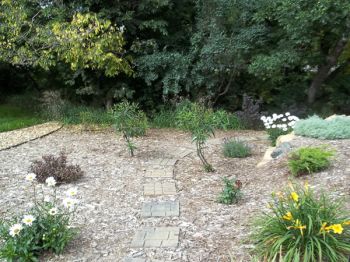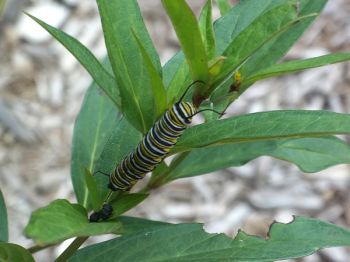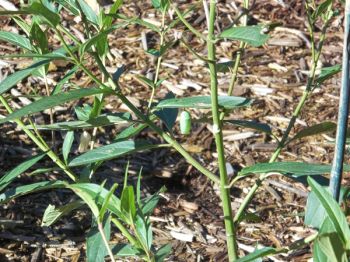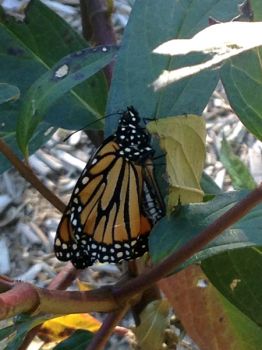The Gift of South Dakota
Subscriptions to South Dakota Magazine make great gifts!
Subscribe today — 1 year (6 issues) is just $29!
Blessed Are The Butterfly Makers
May 20, 2015
It may be a slight paraphrase from the Sermon on the Mount, but who can argue with the idea that making butterflies is passing on a little more peace and beauty in the world. If you have a garden in South Dakota, you can make butterflies — seriously. We’re not talking little grey, not-so-special things. We’re talking the granddaddy — the monarch.
It’s springtime and planting butterfly plants, a form of milkweed, will provide hours of enjoyment with your new neighbors, the monarchs.
MONARCHS
These big beautiful flying insects used to have a lot of family and friends in America. Numbers were once estimated as high a billion. Today they have dwindled to about 90 percent less than their 20-year average, or about 35 million. But in our front yard, the monarch numbers are up — in the dozens.
MILKWEEDS
Monarchs need milkweed to survive. Female monarchs only lay their eggs on milkweed plants. There are many varieties of milkweed, and America is actually divided into mostly four milkweed regions. As luck would have it, the east half of the 57- zip code and the west half don’t share the same zone. Being a child of the Coteau Des Prairie, this article focuses on the east half, which is in the Northeast Region.
The butterfly weed, asclepias tuberosa, is a milkweed plant for your flower garden that monarchs love. The plant has clusters of small flowers, and I don’t know anything about them. My wife is the master gardener who finds and plants things like this. I just like what the butterflies do on it.
You can find monarchs on the milkweed in your ditch too, but it’s more fun to have them right outside your door in the garden where you can spy on them.
WATCHING YOUR GARDEN GROW
The female monarch will lay her pinhead-sized eggs on the underside of your milkweed plant leaves. Four days later the caterpillar will hatch from the egg, and those are hungry dudes. The yellow and black striped caterpillars will eat the eggshell, the leaf on which they were born, and a fair number of the leaves on the plant. They can eat a leaf in an hour.
Eventually the caterpillar will attach to a leaf, form a J and, while hanging upside down, spin a silk pocket. As the caterpillar molts the last time it becomes a chrysalis, a pretty green thimble looking cocoon that hangs down from the butterfly plant leaf as a monarch butterfly grows inside.
Eventually the butterfly emerges and sits on the butterfly plant letting its wings dry before flying away. This whole process happens over a few days, and the plants attract many caterpillars. Consequently, you have many chrysalises growing at the same time and you — and your children, if you share — can watch the process unfold in near real time.
DUCK DYNASTY MEETS THE MONARCH
Now my wife is a dedicated and refined master gardener who has never watched Duck Dynasty, but she does make life entertaining around the home place. This past year she saw firsthand the challenges the monarchs face, when on occasion the chrysalis would disconnect from the plant and fall to the ground. Apparently, like a small bird falling from the nest, it’s a challenge for the butterfly to grow and emerge in that setting. Not to be deterred, my resourceful wife found those black paperclips that can hold about 20 pages together and went to work. She would paperclip the chrysalis back to the plant! Personally I would have favored duct tape, but I’m no certified master gardener. Besides, who am I to argue with success? All of the paper-clipped monarchs grew and emerged to be butterflies. Who knew that I married the Mother Teresa of monarchs!
Lee Schoenbeck grew up in Webster, practices law in Watertown, and is a freelance writer for the South Dakota Magazine website.















Comments